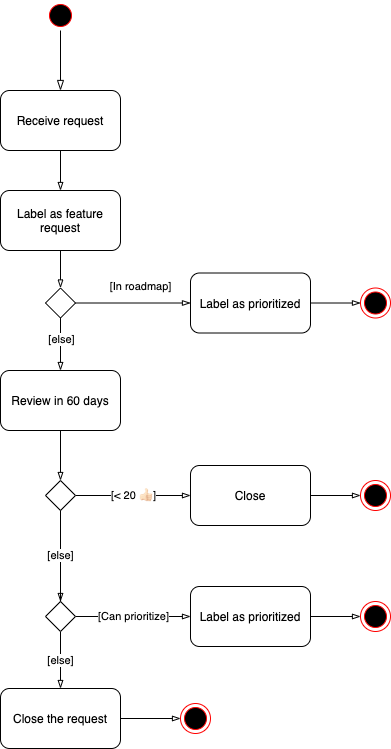Appearance
Feature request process
To manage the requests we receive at scale, we introduced automation in our feature request management process. After we identify an issue as a feature request, it goes through several steps.
Manual review
First, we manually review the issue to see if it aligns with any of the existing roadmap efforts. If it does, we prioritize it accordingly. Alternatively, we keep it open and our feature request bot initiates a voting process.
Voting phase
To include the community in the feature request process, we open voting for a fixed length of time. Anyone can cast a vote for the request with a thumbs-up (👍) reaction on the original issue description. When a feature request reaches 20 or more upvotes, we formally consider the feature request. Alternatively, the bot closes the request.
For issues that are 60+ days old: The voting phase is 20 days
For new issues: The voting phase is 60 days
Consideration phase
If the feature request receives 20 or more thumbs-up (👍) votes on the original issue description (during the voting phase described above), we verify the Angular team can afford to maintain the feature and whether it aligns with the long-term vision of Angular. If the answers to both of these questions are yes, we prioritize the request, alternatively we close it with an explanation of our decision.
Diagram

What if I want to implement the feature to help the Angular team?
Often implementing the feature as a separate package is a better option. Building an external package rather than including the functionality in Angular helps with:
- Keeping the framework's runtime smaller and simpler
- Makes the learning journey of developers getting started with Angular smoother
- Reduces maintainers burden and the complexity of the source code